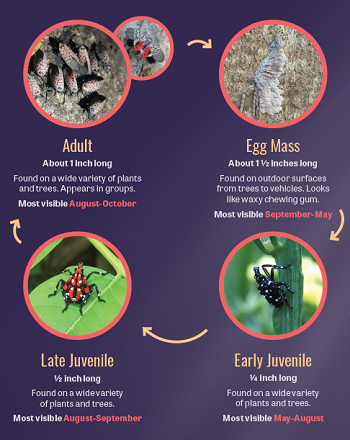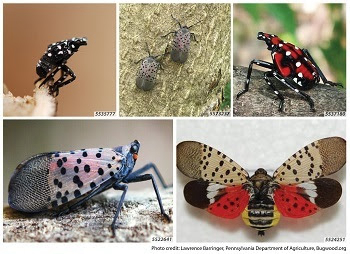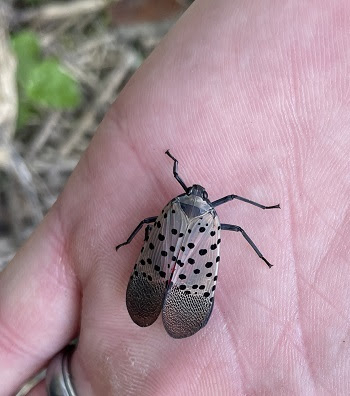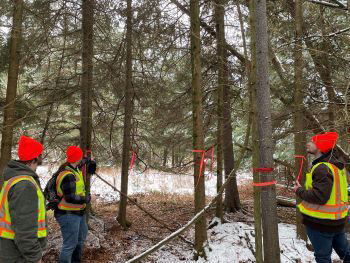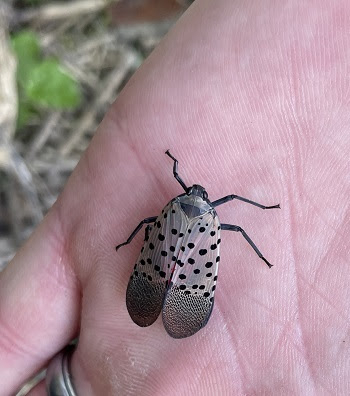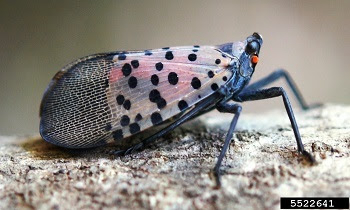Michigan: MDARD, Oakland County responding to invasive spotted lanternfly
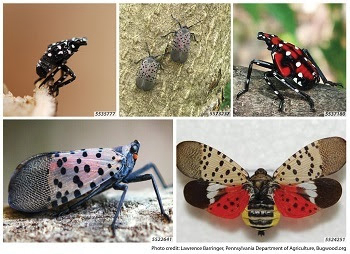
LANSING, Mich. – The Michigan Department of Agriculture and Rural Development (MDARD) is working with Oakland County to limit the spread of spotted lanternfly (Lycorma delicatula). On August 10, the U.S. Department of Agriculture (USDA) confirmed a small population of spotted lanternfly in Pontiac in Oakland County. This is the first confirmed case of live spotted lanternfly in Michigan.
MDARD’s Pesticide and Plant Pest Management Division (PPPM) has surveyed the initial area to determine the extent of the infestation in Pontiac and Oakland County. Surveying revealed the spotted lanternfly population is mostly contained to a small, wooded lot owned by Oakland County.
“We appreciate the partnership and quick action by our partners in Oakland County to help contain the spotted lanternfly infestation. They have already completed pesticide applications of the impacted area,” said Michael Philip, PPPM Division Director within MDARD. “Early detection gives us more tools in the toolbox for response and containment.”
Spotted lanternfly moves easily on firewood, tires, campers, vehicles and more. Prevention and early detection are vital to limiting the spread of spotted lanternfly. If you find a spotted lanternfly egg mass, nymph or adult, take one or more photos, make note of the date, time and location of the sighting, and report it online to Eyes in the Field. Photos are necessary to verify a report and to aid in identification.
“We hope to limit the spread of this invasive population of spotted lanternfly by using targeted pesticide applications and tree removal,” said Jim Nash, Oakland County Water Resources Commissioner. “Our priority is working alongside the Michigan Department of Agriculture to protect our agriculture, natural resources and environment both in Oakland County and across the state.”
“While surveying, MDARD’s PPPM inspectors discovered a significant, but isolated grouping of invasive tree of heaven (Ailanthus altissima), the much preferred host of spotted lanternfly. Given the strong preference of spotted lanternfly to feed on the tree of heaven and the solitary nature of the stand, MDARD is hopeful the population can be contained,” Philip added.
Although spotted lanternfly prefers to feed on tree of heaven, it also feeds on a wide range of plants including grapes and trees such as black walnut, river birch, willow, sumac, and red maple. When feeding, spotted lanternfly produces a sticky liquid, honeydew, that can collect on the ground or surrounding vegetation. This results in the growth of sooty mold, which can discolor and kill plants.
What can you do?
- Check your vehicle: Before leaving a parking lot or work site, inspect vehicles for spotted lanternfly eggs or insects. Check doors, sides, bumpers, wheel wells, grills, and roofs. If found, destroy any eggs or insects you find.
- Park with windows closed: The spotted lanternfly and its nymphs can enter vehicles unsuspectedly. When parked, make sure to keep windows closed.
- Remove and destroy pests: Crush nymphs and adult insects. Scrape egg masses into a plastic bag containing hand sanitizer or rubbing alcohol to kill them.
- Report sightings: Use the Eyes in the Field online system to submit reports. Photos are necessary to verify a report and to aid in identification.
For additional information on identifying or reporting spotted lanternfly, visit Michigan.gov/SpottedLanternfly. You can also learn more at USDA’s Spotted Lanternfly website found at USDA APHIS | Spotted Lanternfly.


